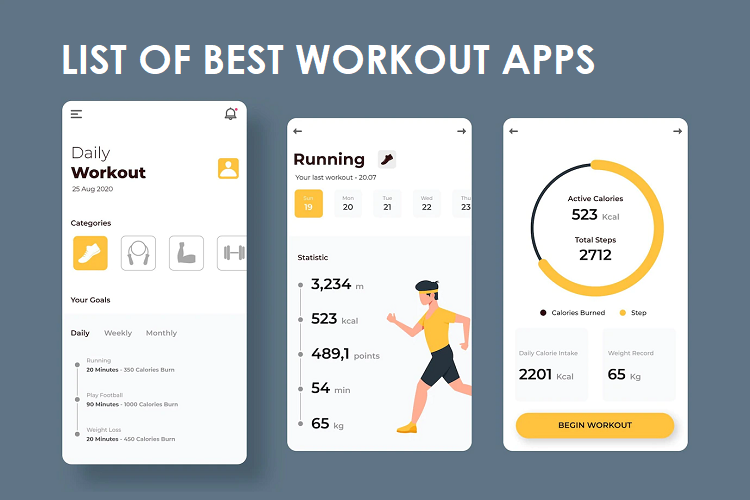An app stack is a group of software working together to reach a common goal. Code stacks typically contain software that is related closely and help to complete specific tasks. There is a difference between the device stacks and program stacks, and both should not be confused.
An application stack offers programs that enhance workflow and help manage tasks, while a software stack provides infrastructure, not the standard application. On the other hand, the app layer offers the framework for working in a software stack and getting minimal interactions.
App Stack Attributes
There are several attributes of the app stack, and some of them are listed below:
- It makes smartphones smarter.
- The users can see all their favorite applications under one app, and it is easy and seamless to move from one to the other.
- You can install App Stack on a device, then register or log in to the application.
- The launch screen contains all the apps that the software supports.
- The app stores your data securely and never logs out even when you are done with it.
- Once you have launched all the apps you need inside the App Stack; you no longer need the external one. So you can delete it or uninstall the application.
- It does not affect or compromise the functions of each app as each one behaves in its unique manner.
- It is smarter than other applications, so it is more than just an app.
- Since it is possible to run several applications simultaneously, users can easily carry out office processes like excel, word, and presentation with this app.
- Applications can be linked inside the App Stack, and whenever the need arises, users can import data from one app to the other.
- The application program eases the workflow and manages the tasks.
- The app’s arrangement is in sequential order, and it uses the principle of Last In First Out (LIFO). An application that’s added at the end is evaluated or taken out first in the App Stack. Two applications can’t be removed at the same time. They are all individually assessed.
App Stack Uses
These are some of the uses of App Stack:
- It can track all the applications. So users can keep an eye on whether someone is using the app or the phone. You can get this data from the log.
- You can get all information about the apps’ functions through App Stack.
- Users can change quickly from one app to the other.
- Backtracking is easy such as searching for other apps, finding the path, etc.
- It helps with memory management and also helps to manage many languages, and the memory is dynamically allocated.
- It evaluates various expressions, especially control structures and arithmetic expressions.
- The suffix and prefix notations are easy to identify and manage as well.
- It is also easy to translate an Infix into a Postfix.
App Stack Advantages
Among the numerous benefits of App Stack, here are a few that you should note:
- Users can easily add and remove apps to and from the stack, making the application operation easy.
- The cost of using this application is inexpensive since it has a minimal hardware requirement.
- It works within cross-platforms and manages all the apps inside the App Stack. So it does not create memory drawbacks.
- It manages memory with ease, and the user is not required to do anything about the memory. The software’s CPU can manage this by itself.
- Users can easily switch between apps. For developers, they can switch easily between server and client applications.
- A real-time demo is accessible inside the App Stack.
- All applications are stored in one application, so it saves a lot of time, and there are many things the users do not have to worry about.
- The users can collaborate with the cloud if needed, and their data will remain safely kept.
Tips for choosing an app stack
Using the right app stack can make or break your project. Here are some of the constituent pillars to make up a successful app:
- App development cost: the cost of app development plays a crucial role when choosing an app stack. Making the right investment will allow you access to some of the best tools within the IT industry.
- Maintenance and other parameters: the story of an app does not end after it has been developed. As time passes, the app will need to be maintained, and new features will be added. Also, the app has to retain its users by being aware and in line with the latest developments.
- App size and complexity: the performance of an app is improved by small size and the functionality of its RAM. While it may be complex in several ways. However, apps with optimal sizes often come out as the winner over similar apps.
- App security: users trust the app and the developer’s project when they rely on it. So, the app must have solid security to keep its details safe.
- Testing and launching the app: the app must always be at its best in all scenarios. Hence, all use cases must be tested to ensure that the app does not miss the expected result.
Conclusion
Mobile applications are the future, so we must learn to maximize their potential to achieve higher productivity. This is achievable with App Stack. Now that you have read this article, you already know everything you need to know, such as the features, uses, and benefits of App Stack. Therefore, you can agree that it is precisely what you need.
Jake S. Platt is 31. He has a master’s degree in marketing and currently started his way as a content writer for best essay writing service where he provides dissertation help. He wrote his first story at age 15, now he brings his decades of experience to inspire people to explore the world.




